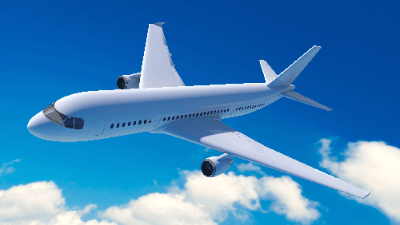What Is a Passenger Plane?

A Passenger Plane is an aircraft designed to transport passengers.
The passenger capacity of a plane varies widely, from around 10 passengers for small planes to approximately 850 passengers for large planes. Typically, passenger planes have a cockpit at the front, followed by cabins with seats, restrooms, galleys, and below the cabins, there is a cargo compartment for transporting passengers’ luggage and airfreight.
In addition, there are ultra-large planes with a two-deck structure. The range of passenger planes can extend to over 17,000 kilometers for the longest-distance models.
Uses of Passenger Plane
Passenger planes are utilized by airlines authorized by the government to transport a large number of passengers. Scheduled flights, following flight times and routes submitted to relevant authorities, are the mainstay of airline-operated passenger planes. Additionally, there are charter flights that transport passengers gathered by travel agencies, airlines, and other organizations on a one-time basis.
Strict regulations are in place for the operation of passenger planes from a safety perspective. Compliance with instructions from ground controllers is required not only during takeoff and landing but also throughout all stages of flight. Multiple pilots, including the captain, are on duty during operations, and several flight attendants corresponding to the number of passenger seats ensure the safe transport of passengers.
Principle of Passenger Plane
When a passenger plane is in flight, four types of forces act on the aircraft: thrust, drag, lift, and gravity. If thrust exceeds drag, the plane moves forward, and if lift exceeds gravity, the aircraft becomes airborne.
1. Thrust
Thrust is generated by the propellers and engines. The engine causes the propeller to rotate, and compressed air is expelled backward.
Jet propulsion involves gases or liquids being expelled in the opposite direction. In other words, a jet engine forcefully expels gas backward, propelling the aircraft forward in reaction.
2. Lift
When an object moves through the air, vertical force is generated from the airflow in the direction of the object’s movement. In the case of a forward-moving passenger plane, lift acts upward, causing the aircraft to ascend.
Passenger planes can be designed for efficient lift generation by adjusting the size, shape, and angle of the wings. This is achieved through the wings’ structure, which extends horizontally from the fuselage, creating lower air pressure on the upper side when the aircraft is in motion. The difference in pressure causes air to be drawn toward the lower-pressure side. Wing designs vary among different passenger plane models to efficiently generate the necessary lift for flight.
Structure of Passenger Plane
Passenger planes have a structure common to general aircraft.
1. Fuselage
The fuselage of a passenger plane adopts a semi-monocoque structure composed of frames, skin, stringers, and other elements. Stringers support the skin from the inside at intervals of 15 to 25 cm, while frames provide additional support at intervals of approximately 50 to 55 cm from the inside, spreading throughout the entire fuselage except for openings. Frames, skin, and stringers are connected with shear ties and straps.
2. Wings
The wings of a passenger plane consist of the main wing, horizontal stabilizer, vertical stabilizer, and movable surfaces. Auxiliary surfaces, also known as control surfaces, elevators, and rudders, which are referred to as main control surfaces, often use a sandwich structure with outer panels and honeycomb material. The industry is transitioning from all-metal designs to composite materials. Elevators are connected by torque tubes.
3. Fuel Tanks
Passenger planes typically have fuel tanks within the main wings. In large passenger planes, these tanks constitute the central part of the wings and are structured as box-shaped components. Fuel-resistant sealant is applied to the connection surfaces, and rain-resistant seal material is applied to the side facing the aircraft surface.
4. Landing Gear
The landing gear of passenger planes is retractable and is also known as the landing gear or undercarriage. Generally, it consists of shock-absorbing legs, landing gear assemblies with retracting and steering mechanisms, brakes, wheels, and tires.
5. Windows
Windows on the passenger side of the plane are composed of three layers from the inside: polycarbonate sheet, non-stretch acrylic sheet, and stretch acrylic sheet.
6. Doors
Passenger plane interiors are airtight to prevent air leakage, maintaining cabin pressure.